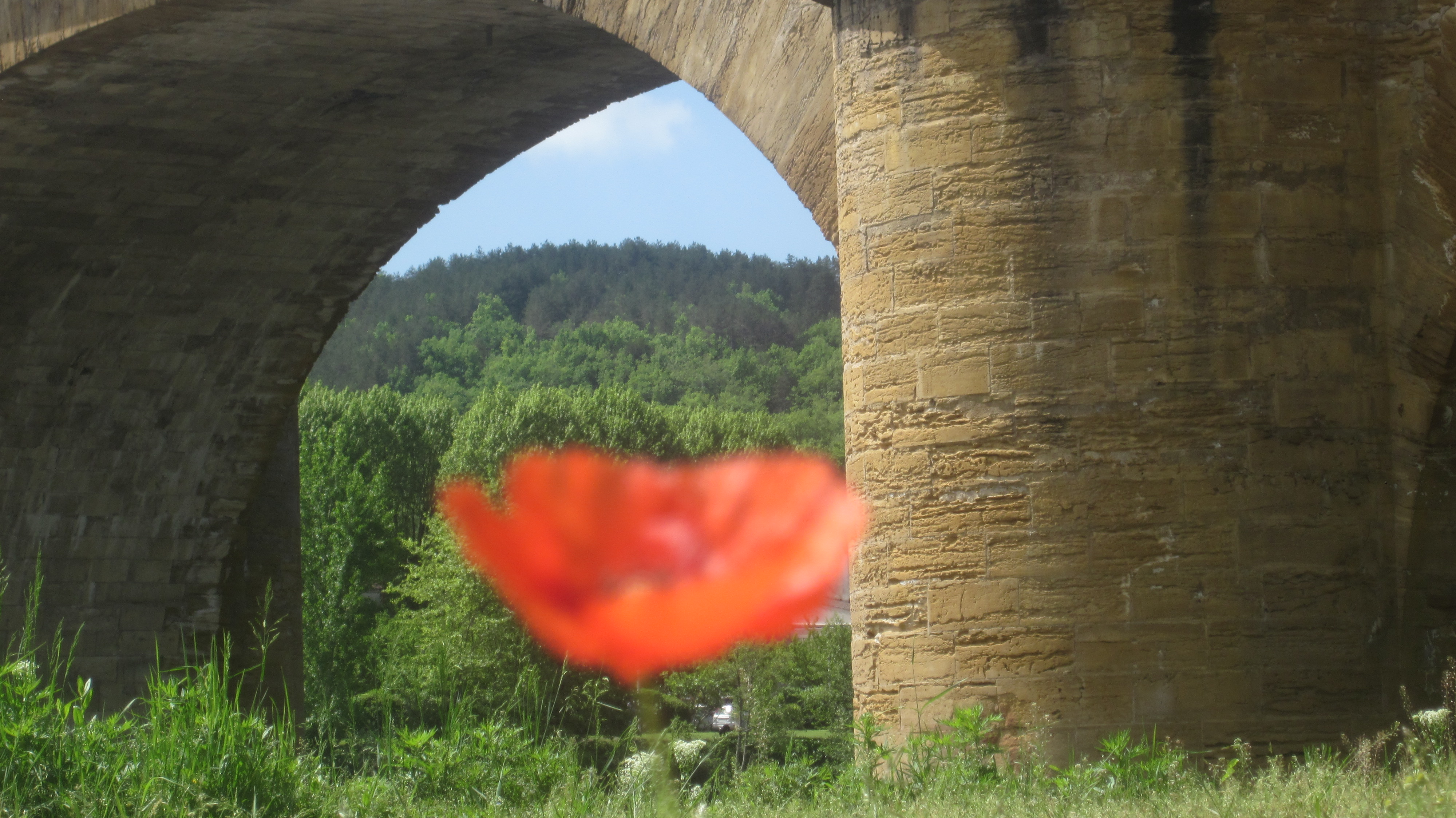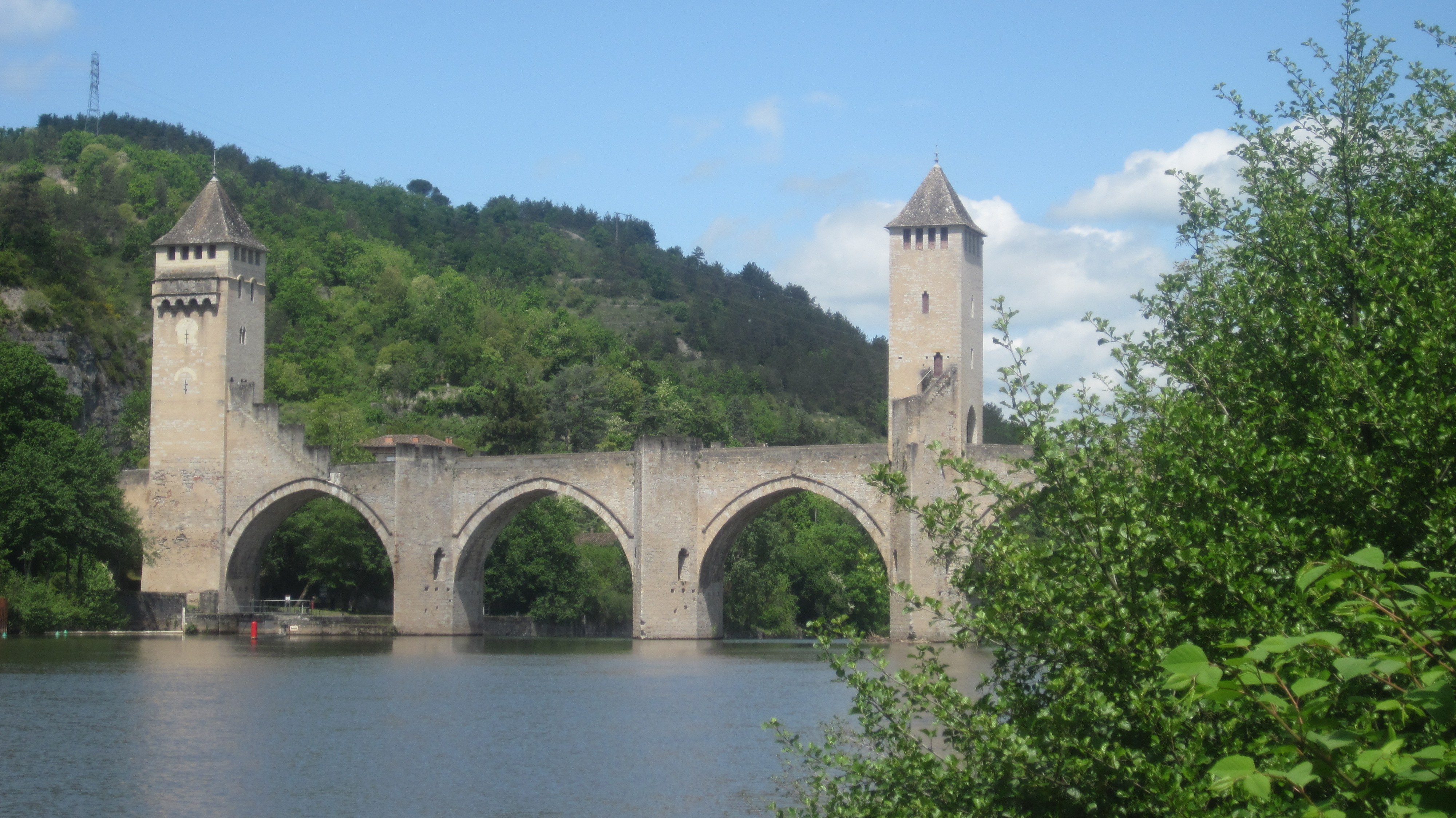Our “day-off-breakfast” started at 8.30 with a French Canadian couple and Pierre – in Pierre’s luxurious dining room … fun. Pierre, the owner of all knowledge was also interested in the bits we had to share, that he didn’t know. We are aware that English is spoken for our sake so we let them know that we get the gist of their conversation so as not to take away the richness of their more familiar tongue. We finished our croissants and freshly squeezed orange juice, did our daily hill walk up the walnut spiral staircase and soon out onto the lanes of Cahors.
A delightful commune to spend time strolling around the river’s edge, visiting the two busy markets, and just being in these very old and silent streets. Many of these houses are not restored but neither are they dilapidated. Pierre tells us that mostly older people live here – some are chambers for guests like us – opposite us some terraces are for people who have a mental illness and I saw a smattering of young folk seemingly residents of some sort. Towards the open part of the ‘U’ (Day 16), are cafes, various shops and small bars.
These bars remind us of something that Cahors is famous for – its ‘black wines’, which are referred to by many as the darkest in the world. They are also amongst the strongest and richest and will keep for a very long time. I was curious that we had not seen any vines and asked Pierre who told us that we also won’t see them on the way out, because we will be going more south and the vines are going west.
On our walk along the main street dividing the old village from the new, we pass a large statue of Leon Gambetta, a big name in town. He is special because he preserved Cahors self-respect through the gallantry of the resistance he organized during the Franco-Prussian War and by his tact in persuading extreme partisans to accept a moderate Republic for which he was strongly in favour.
We had lunch in the U shape and after had another walk round the river Lot passing under 2 beautiful bridges, the most esteemed being its famous fortified 14th century Valentre bridge.
As Corrie took some more euros from the teller machine on the way to the tourist office we remembered someone telling us of another side of Cahors, but a long time ago. It was infamous for having bankers that charged interest on their loans. The church in these times said that using money as an end in itself (usury) was a sin. Because of this Cahors became synonymous with this sin, and was mentioned in Dante’s Inferno alongside Sodom as wicked.
I asked the young man at the tourist office if there was a famous poet or writer from here and he mentioned André Breton, a French writer and poet. He is known best as the founder of Surrealism. His writings include the first Surrealist Manifesto. He also was an admirer of Freud and based a lot of his surrealistic ideas on Freud’s writings on the unconscious mind and dream interpretations.
My dreams lately have been very vivid and real, it might be time to interpret them and thus enrich my walking experience.





We have been following your Blog each day. We love the photos. It looks amazing. Christine & Gareth
I love the photo with the poppy and the bridge..it is gorgeous and so wonderfully framed!